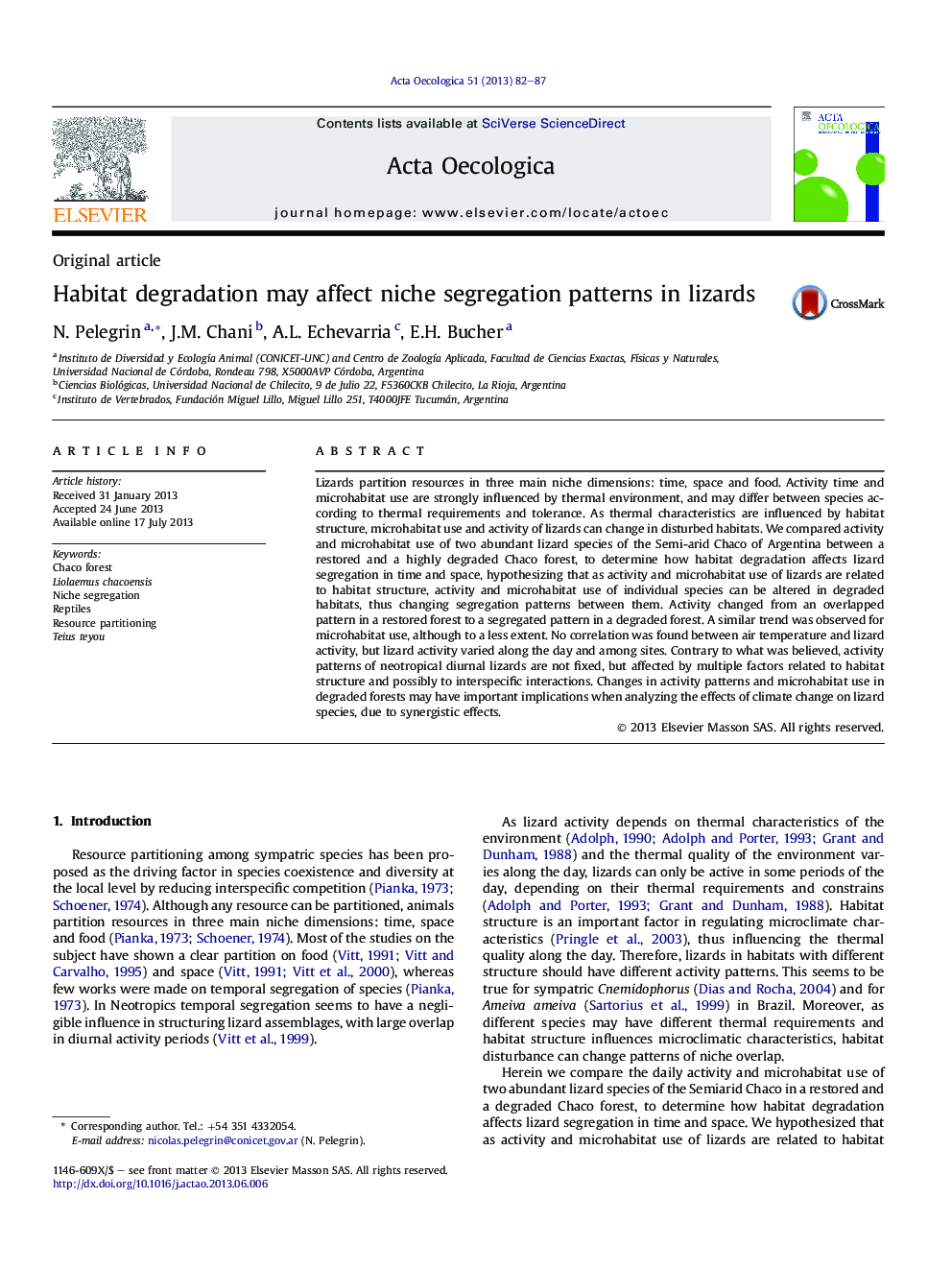| Article ID | Journal | Published Year | Pages | File Type |
|---|---|---|---|---|
| 4380789 | Acta Oecologica | 2013 | 6 Pages |
•We analyzed the effect of forest degradation on niche segregation patterns of lizards.•Lizards segregated in degraded forest but overlapped in restored forest.•Lizard activity patterns are not fixed.•Habitat degradation can lead to changes in segregation patterns.
Lizards partition resources in three main niche dimensions: time, space and food. Activity time and microhabitat use are strongly influenced by thermal environment, and may differ between species according to thermal requirements and tolerance. As thermal characteristics are influenced by habitat structure, microhabitat use and activity of lizards can change in disturbed habitats. We compared activity and microhabitat use of two abundant lizard species of the Semi-arid Chaco of Argentina between a restored and a highly degraded Chaco forest, to determine how habitat degradation affects lizard segregation in time and space, hypothesizing that as activity and microhabitat use of lizards are related to habitat structure, activity and microhabitat use of individual species can be altered in degraded habitats, thus changing segregation patterns between them. Activity changed from an overlapped pattern in a restored forest to a segregated pattern in a degraded forest. A similar trend was observed for microhabitat use, although to a less extent. No correlation was found between air temperature and lizard activity, but lizard activity varied along the day and among sites. Contrary to what was believed, activity patterns of neotropical diurnal lizards are not fixed, but affected by multiple factors related to habitat structure and possibly to interspecific interactions. Changes in activity patterns and microhabitat use in degraded forests may have important implications when analyzing the effects of climate change on lizard species, due to synergistic effects.
